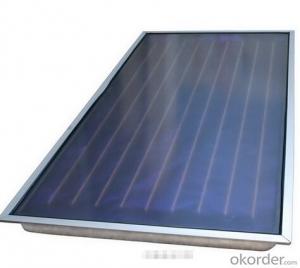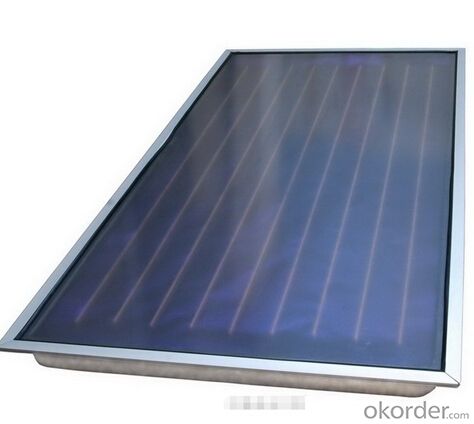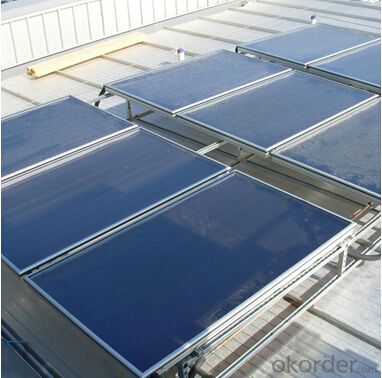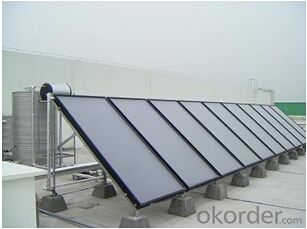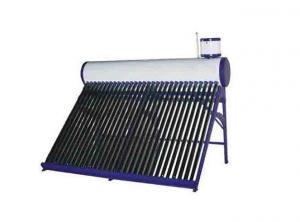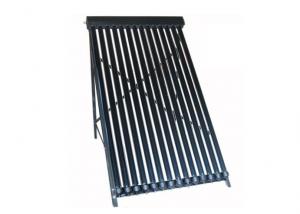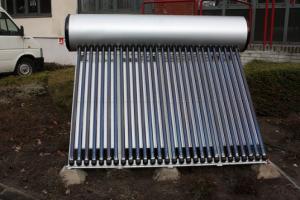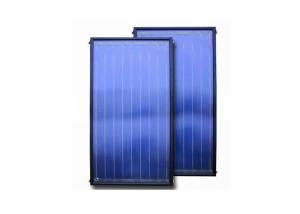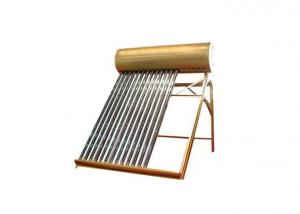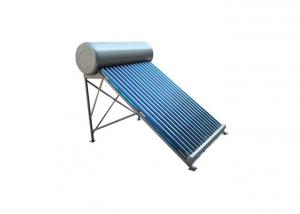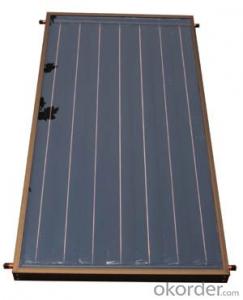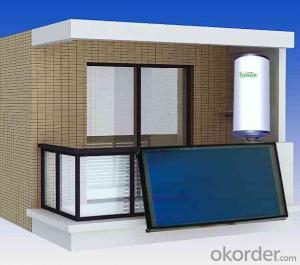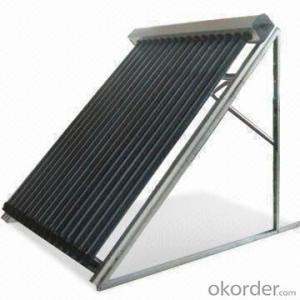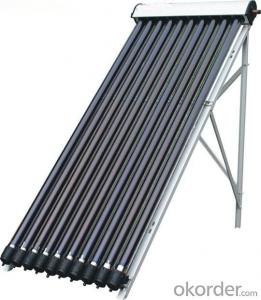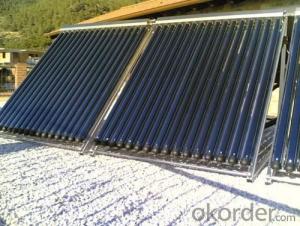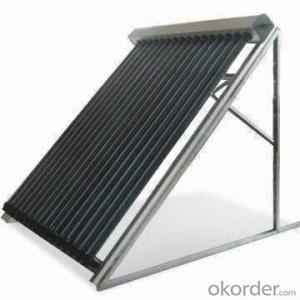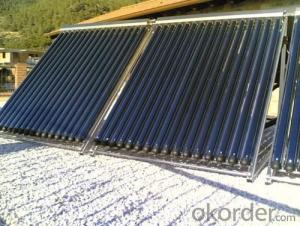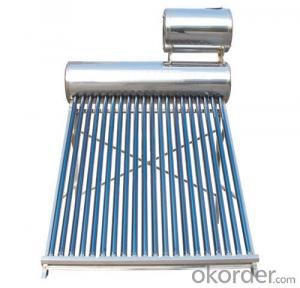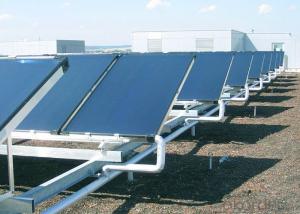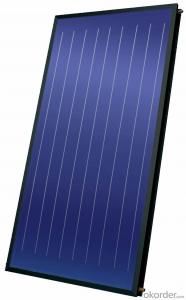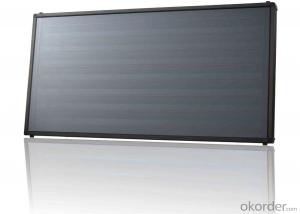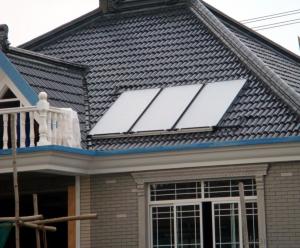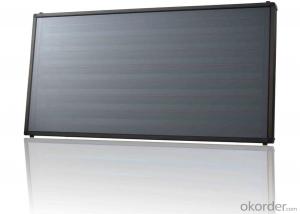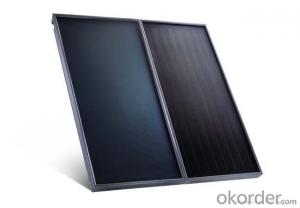High Efficiency Heat Pipe Solar Collectors With Flexible Tubing
- Loading Port:
- China main port
- Payment Terms:
- TT OR LC
- Min Order Qty:
- 10 unit
- Supply Capability:
- 50000 unit/month
OKorder Service Pledge
OKorder Financial Service
You Might Also Like
High Efficiency and Heat Pipe Solar Collector
High Efficiency and Heat Pipe Solar Collector Features
1) Aluminum silicate which resist high temperature up to 1000 degree C.
2) New patent for clip system which easy to insert and secure without soap foam.
3) Looks more stylish, stronger and nicer.
4) Installation is much faster, free maintenance.
5) Suitable for mains pressure water (up to 16 bar);
6) The silver coated of the glass is visible, so easy to inspect if the tube has lost vacuum.
High Efficiency and Heat Pipe Solar Collector Work Principle
1) The operation of the solar collector is very simple.
2) Solar absorption: solar radiation is absorbed by the solar tubes and
converted into heat.
3) Solar heat transfer: heat pipes conduct the heat from within the solar tube
up to the header pipe
4) Solar energy storage: water is circulated through the header, via
intermittent pump cycling.Each time the water circulates through the header, the
temperatures is raised by 5-10C. Throughout the day, the water in the tank is
gradually heated.
High Efficiency and Heat Pipe Solar Collector Technical Specifications
Model | JJR-HP-15 | JJR-HP -18 | JJR-HP -20 | JJR-HP -24 | JJR-HP -25 | JJR-HP -30 |
Length of Tube | 1800mm | 1800mm | 1800mm | 1800mm | 1800mm | 1800mm |
Outer Diameter of Tube | φ58mm | φ58mm | φ58mm | φ58mm | φ58mm | φ58mm |
Qty of Tube | 15 | 18 | 20 | 24 | 25 | 30 |
Collecting Area | 1.9m2 | 2.30m2 | 2.55m2 | 3.04m2 | 3.2m2 | 3.84m2 |
Loading Qty (set) 20'FT | 112 | 94 | 90 | 74 | 74 | 65 |
40' FT | 224 | 188 | 180 | 148 | 148 | 130 |
40' HQ | 270 | 226 | 220 | 182 | 182 | 158 |
Product Show
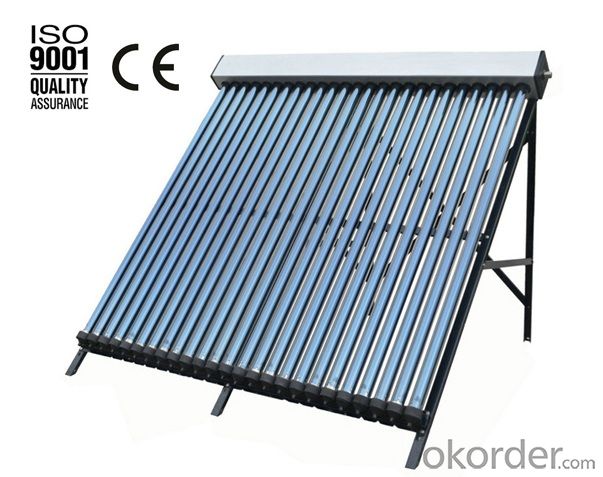
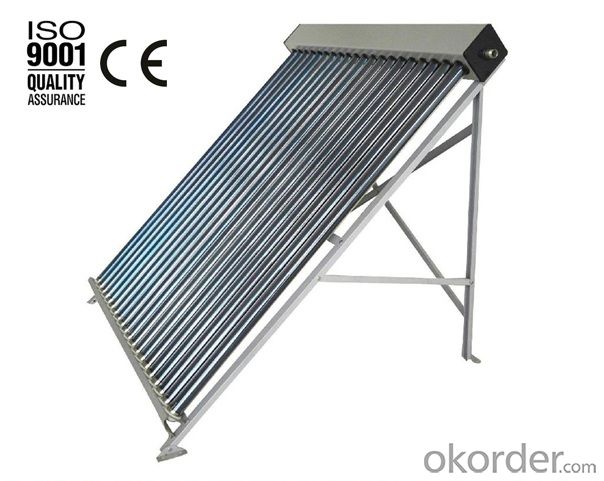
- Q: Can solar collectors be used for generating electricity on amusement park rides?
- Yes, solar collectors can be used for generating electricity on amusement park rides. Solar collectors, also known as solar panels, are designed to convert sunlight into electricity. They can be installed on the rooftops or other suitable locations of amusement park rides to harness the abundant sunlight available during the day. The generated electricity can then be used to power various components of the ride, such as lights, sound systems, motors, and other electrical equipment. By utilizing solar collectors, amusement park rides can reduce their reliance on traditional power sources, decrease carbon emissions, and contribute to a more sustainable and environmentally friendly operation.
- Q: Can solar collectors be used for heating power plants and energy facilities?
- Solar collectors have the capability to be utilized in heating power plants and energy facilities. The utilization of solar thermal technology, which involves the use of solar collectors to capture the heat from the sun, can enable the production of steam for power generation. One example of this is Concentrated Solar Power (CSP) systems, which concentrate sunlight onto a receiver using mirrors or lenses. The receiver then converts the sunlight into thermal energy. This thermal energy can be harnessed in power plants to generate steam, which subsequently drives a turbine and produces electricity. Moreover, solar collectors can be employed to heat water or other fluids, which can then be utilized for heating purposes in energy facilities like district heating systems or industrial processes. In both instances, solar collectors serve as a sustainable and renewable source of heat, lessening the reliance on fossil fuels and contributing to a cleaner and more sustainable energy system.
- Q: Can solar collectors be used for cooling?
- Yes, solar collectors can be used for cooling through the process of solar cooling. Solar thermal collectors can generate heat, which can be harnessed to power absorption chillers or desiccant cooling systems, thus providing cooling. This process utilizes renewable energy from the sun to provide cooling solutions, making it an environmentally friendly option.
- Q: Are there any limitations to the size of a solar collector system?
- Yes, there are limitations to the size of a solar collector system. The size of a solar collector system is limited by factors such as available space, budget constraints, and the energy needs of the property. Additionally, larger systems may require additional permits, maintenance, and installation costs.
- Q: Can solar collectors be used for heating oil in industrial processes?
- Solar collectors have the ability to be utilized in industrial processes to heat oil. By utilizing sunlight to generate heat, solar thermal systems can effectively heat oil through the use of a heat exchanger. This method proves to be particularly effective in industries that rely on heating processes, such as oil refineries, chemical plants, and manufacturing facilities. Solar thermal panels, also known as solar collectors, are specifically designed to capture and convert sunlight into heat. These panels consist of tubes or panels that contain a material capable of absorbing heat. When sunlight comes into contact with this material, it heats up, and the resulting heat is then transferred to a fluid flowing through the tubes or panels. The heated fluid can then be used directly or indirectly to heat oil in industrial processes. In situations where industrial processes require oil heating, a solar thermal system can be seamlessly integrated into the existing heating infrastructure. Solar collectors can be installed on rooftops or ground-mounted in areas that receive ample sunlight exposure. The heat generated by these solar collectors can be used to preheat the oil, thereby reducing the energy consumption of conventional heating systems. The utilization of solar thermal systems in industrial processes that rely on oil heating can yield significant energy savings and a reduction in greenhouse gas emissions. By harnessing renewable solar energy, industries can decrease their reliance on fossil fuels and contribute to a more sustainable energy future. However, it is important to consider that the effectiveness of solar collectors for heating oil in industrial processes may vary based on factors such as sunlight availability, required oil temperature, and specific industrial requirements. As such, a thorough analysis and engineering evaluation should be conducted to determine the feasibility and optimal design of a solar thermal system for heating oil in a particular industrial setting.
- Q: What is the effect of shading on solar collectors?
- The effect of shading on solar collectors is a significant reduction in their overall energy production. Shading prevents direct sunlight from reaching the surface of the solar collectors, which hinders their ability to convert solar radiation into usable electricity or heat. As a result, shaded areas on solar collectors experience decreased efficiency and output, ultimately compromising the overall performance of the system. It is crucial to minimize shading to maximize the energy yield and effectiveness of solar collectors.
- Q: Can solar collectors be used in waste management facilities?
- Yes, solar collectors can be used in waste management facilities. They can be utilized to generate renewable energy for various processes, such as powering equipment, heating water, or running waste treatment systems. This can help reduce reliance on fossil fuels and decrease the carbon footprint of waste management operations. Additionally, solar collectors can contribute to cost savings and promote sustainability in waste management facilities.
- Q: Can solar collectors be used for sterilization?
- Yes, solar collectors can be used for sterilization purposes. Solar collectors, also known as solar thermal systems, harness the sun's energy to heat water or other fluids. This heat can be utilized for various applications, including sterilization. One common method of using solar collectors for sterilization is by using the heat generated from the sun to heat water or steam. This hot water or steam can be used to sterilize medical instruments, equipment, or even water for drinking purposes. The high temperatures reached by the solar collectors can effectively kill bacteria, viruses, and other microorganisms, ensuring a high level of sterilization. Solar collectors can also be used for sterilization in other applications. For example, in the food industry, solar thermal systems can be used to generate steam for sterilizing food processing equipment or for pasteurization purposes. This helps to ensure the safety and quality of food products. Furthermore, solar collectors can be used in remote or off-grid areas where access to electricity or traditional sterilization methods may be limited. By utilizing solar energy, these systems offer a sustainable and cost-effective solution for sterilization needs. In summary, solar collectors can indeed be used for sterilization purposes. They provide a renewable and environmentally friendly source of energy, offering an effective and efficient solution for sterilizing medical instruments, equipment, water, and other applications where sterilization is required.
- Q: How do solar collectors compare to traditional fossil fuel-based heating systems in terms of emissions?
- Solar collectors are far superior to traditional fossil fuel-based heating systems when it comes to emissions. Fossil fuel-based heating systems, such as those that rely on burning coal, oil, or natural gas, emit large amounts of greenhouse gases, primarily carbon dioxide (CO2), which contribute to global warming and climate change. On the other hand, solar collectors generate heat by harnessing the sun's energy, which produces no direct emissions or pollution. By using solar collectors for heating, we can significantly reduce our carbon footprint and mitigate the negative impact on the environment. Solar energy is a renewable and clean source of power, ensuring that no harmful pollutants are released into the atmosphere during its generation. This makes solar collectors a crucial component in transitioning to a more sustainable and eco-friendly future. Furthermore, solar collectors do not require any ongoing fuel supply, as they solely rely on the abundant and free energy from the sun. In contrast, fossil fuel-based systems are dependent on the extraction, transportation, and burning of fossil fuels, which not only depletes finite resources but also contributes to air pollution and environmental degradation. In summary, solar collectors outshine traditional fossil fuel-based heating systems in terms of emissions. They offer a sustainable and environmentally friendly alternative, helping to combat climate change, reduce air pollution, and preserve our planet for future generations.
- Q: Can solar collectors be used in areas with limited access to financing?
- Yes, solar collectors can be used in areas with limited access to financing. There are several options available to overcome the financial barriers in such areas. These include government incentives, grants, crowdfunding, microfinancing, and partnerships with non-profit organizations. Additionally, the decreasing costs of solar technology and the potential for long-term savings on energy bills make solar collectors a viable option even in areas with limited financial resources.
Send your message to us
High Efficiency Heat Pipe Solar Collectors With Flexible Tubing
- Loading Port:
- China main port
- Payment Terms:
- TT OR LC
- Min Order Qty:
- 10 unit
- Supply Capability:
- 50000 unit/month
OKorder Service Pledge
OKorder Financial Service
Similar products
Hot products
Hot Searches
Related keywords
